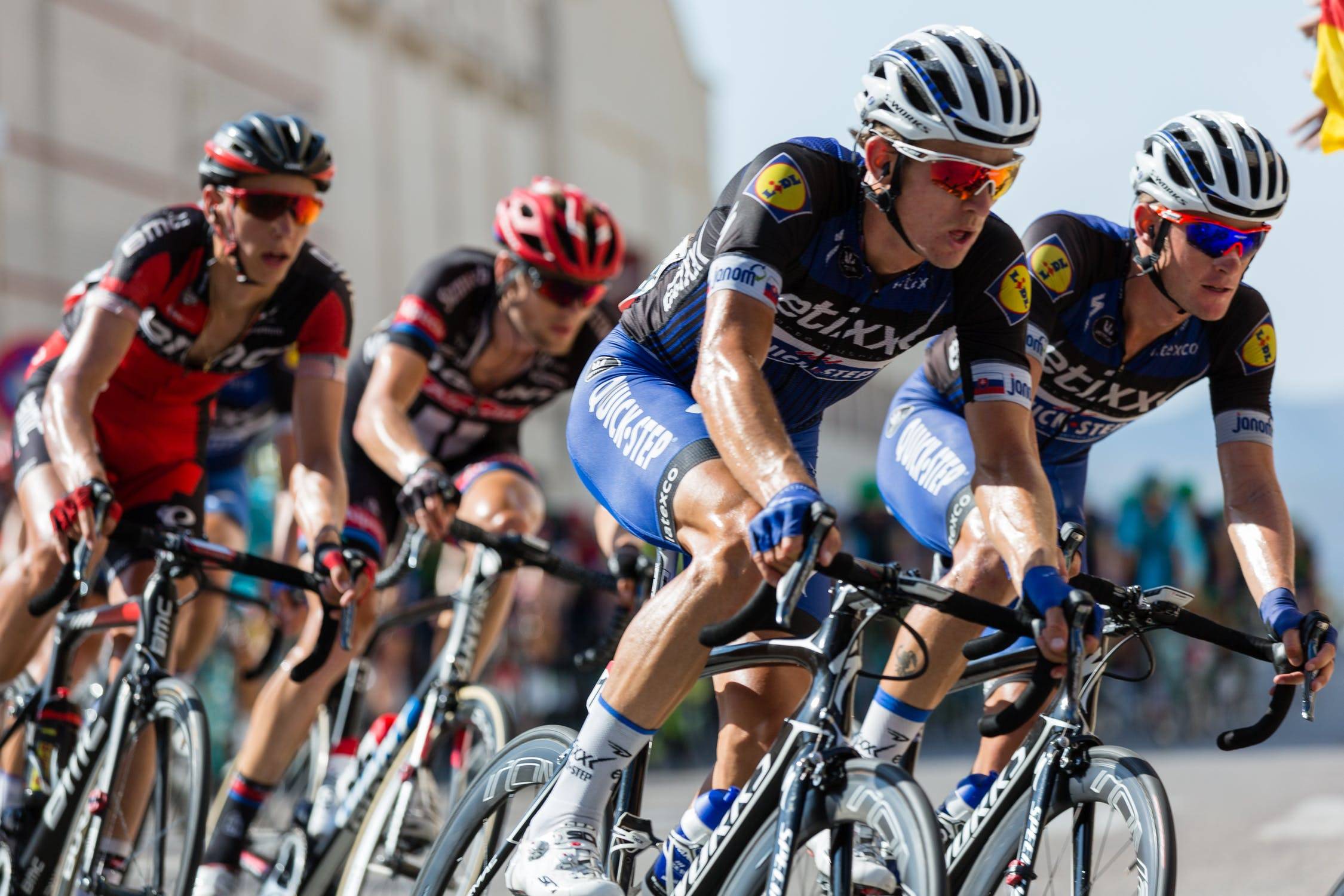Statt flatterndem Trikot oder labbrigem Einteiler sieht man immer häufiger perfekt sitzende Aeroanzüge auch auf den Triathlon Rennstrecken. Hersteller versprechen bessere Zeiten dank eng anliegendem Material und besonderem Schnitt. Ob das so stimmt haben wir auf der Radrennbahn im Aerotest getestet. Zunächst jedoch, haben wir uns auf dem Markt umgesehen.
Natürlich ist die Wahl der Wettkampfkleidung so individuell wie die Wahl allen anderen Equipments. Abhängig von Größe und Körperbau, von bevorzugter Distanz, von Vorlieben und Gewohnheiten, weiß wohl niemand besser als der Sportler selbst, was er braucht. Wenn es um die perfekte Aerodynamik geht, gilt es dennoch einiges zu beachten.
Hauteng = windschnittig
Wichtigstes Argument – das wird auch unser Testbericht in den nächsten Tagen zeigen – ist der perfekte Sitz des Anzugs. Je weniger Falten und Verwürfe, umso besser ist seine Aerodynamik. Auch auf die vermeintlich kleinen Details gilt es ein Auge zu haben. Ist der Reißverschluss gut „verpackt“? Sind die Taschen für Verpflegung eng anliegend? Sitzt der Kragen gut?
Lange Ärmel können einen kleinen Vorteil bringen. Vorsicht aber: Droht ein Schwimmen ohne Neoprenanzug, dürfen die Einteiler mit Ärmeln nicht unter dem Schwimmanzug getragen werden. Der entsprechende Absatz dazu findet sich in der Sportordnung der DTU auf Seite 20:
„Ist das Schwimmen mit Kälteschutzanzug verboten, darf die Schwimmbekleidung keine Körperstellen an den Armen unterhalb der Ellbogen und unterhalb der Knie bedecken.“
Es gilt sich dann zu überlegen, ob das Anziehen nach dem Schwimmen nicht mehr Zeit in Anspruch nimmt, als man auf der Radstrecke sparen kann.
Schöner Nebeneffekt
Natürlich finden sich auch in den Aeroanzügen hochmoderne Technologien wie Coldblack (schwarze Oberfläche die trotzdem das Sonnenlicht reflektiert), Lotusblüteneffekt (die Bekleidung wird nicht mehr nass), Kompressionswirkung oder verschweißte Nähte. Solch High-Tech sorgt für schnelles Schwimmen, auch ohne Neoprenanzug (im Falle der Anzüge ohne Ärmel), oder ein optimiertes Hitze- und Schweisstransport-Management.
Im kleinen Testen, im großen sorgenfrei starten
Es macht grundsätzlich, wie mit allem Material, Sinn, seine Wettkampfbekleidung vor der Saison oder im Vorfeld eines Wettkampfes zu testen. Nur so kann man feststellen, ob die Kleidung reibt, drückt oder zwickt, und ob das Zusammenspiel der verschiedenen Ausrüstungsgegenstände (Schuhe, Startnummernband, Brille etc.) gut funktioniert. Entdeckt man Schwachstellen, kann im Vorfeld des Rennens noch ein Austausch des Materials stattfinden, oder mithilfe von BodyGlide oder Vaseline Scheuerstellen minimiert werden.




















